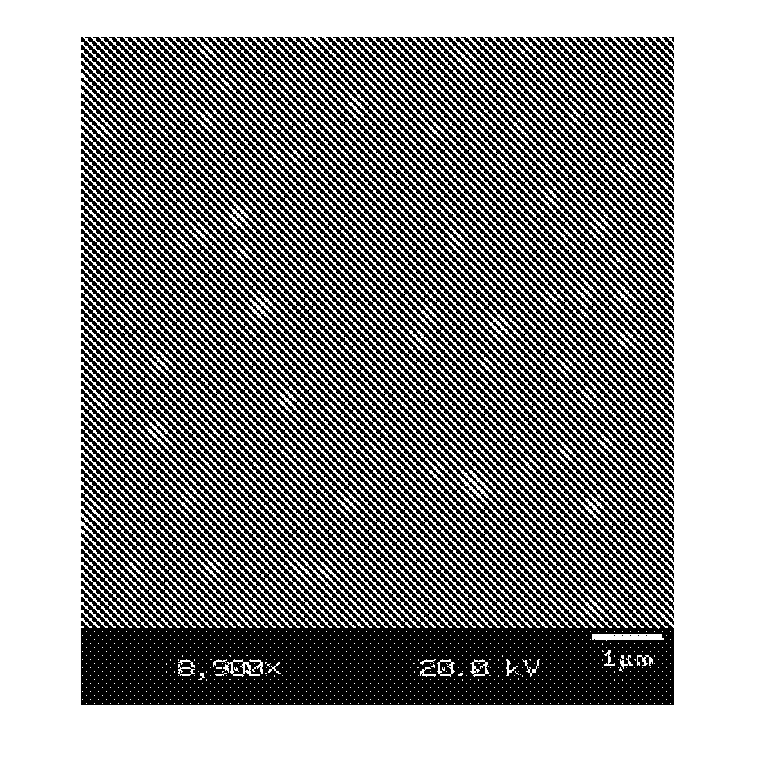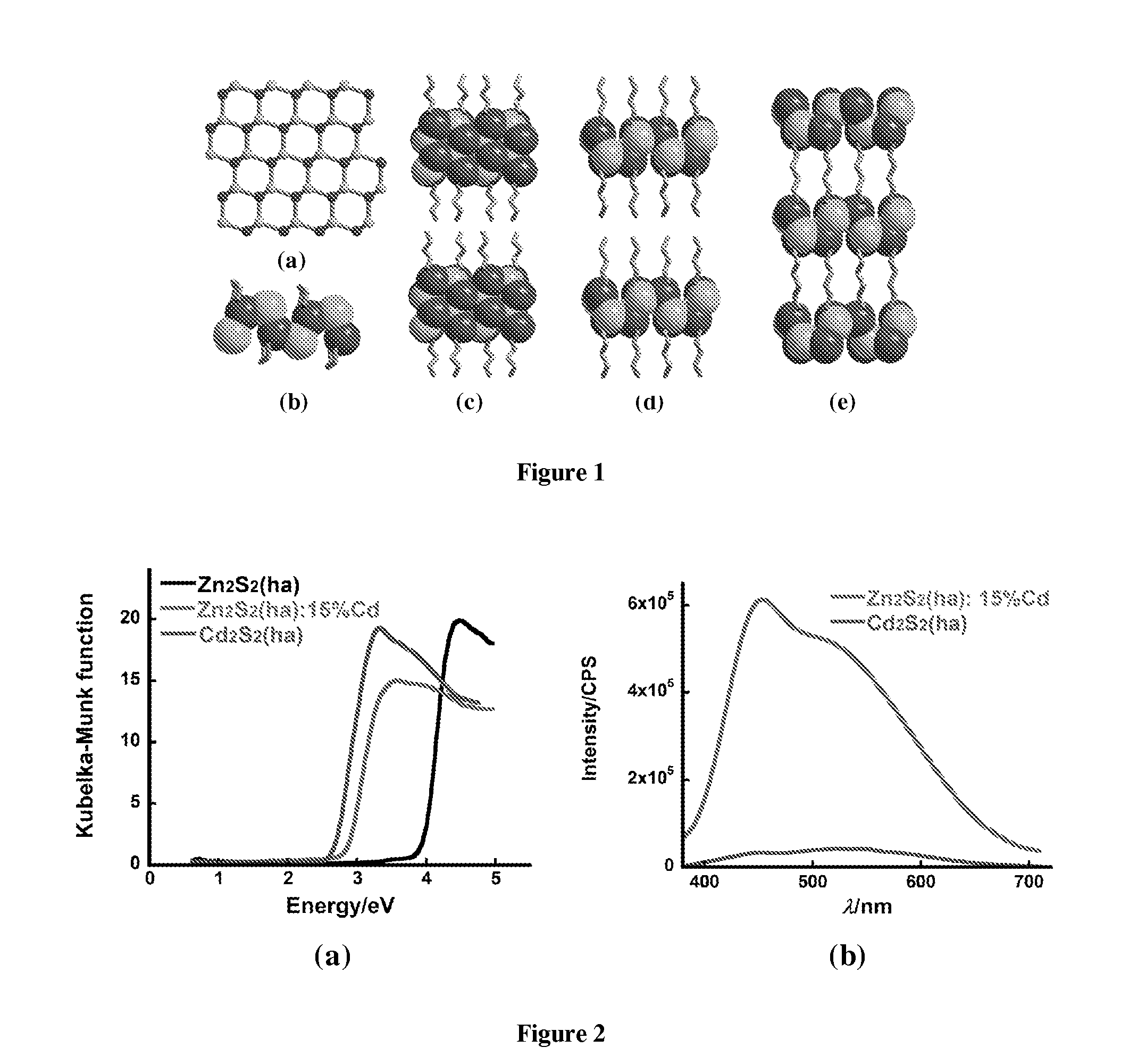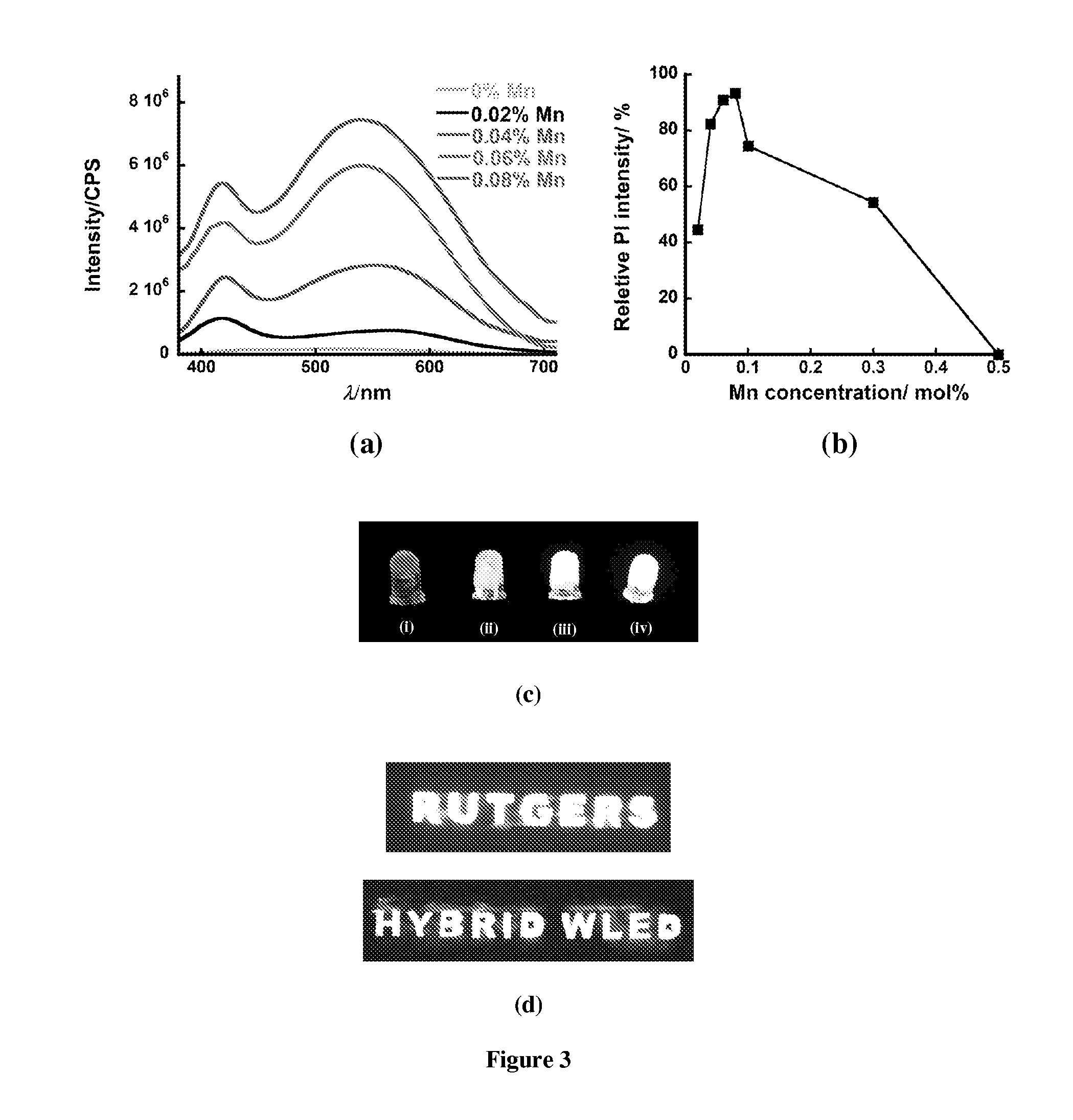Solid-state compositions and methods for generating white light
a solid-state composition and white light technology, applied in the field of organic organic hybrid semiconductors, can solve the problems of insufficient illumination, high color rendering index, and most expensive rgb multi-chip leds, and achieve the effect of high white light emission efficiency
- Summary
- Abstract
- Description
- Claims
- Application Information
AI Technical Summary
Benefits of technology
Problems solved by technology
Method used
Image
Examples
examples
1. Experimental Section
a) Materials
[0144]ZnCl2 (98%+, Alfa aesar), Zn(NO3)2·H2O (98%), CdCl2 (99%, Alfa Aesar), S (99+%, Strem), Se (99.5%), MnCl2 (97%, Alfa aesar), n-butylamine or ba (99%, Alfa Aesar), n-hexylamine or ha (99%, Alfa Aesar), n-propylamine or pa (99%, Alfa Aesar), n-octylamine or oa (99%, Alfa Aesar), dimethyl sulfoxide or DMSO (99.99%, Alfa Aesar), trans-stilbene (99%, Acros), and hexane (99.99) were all used as received without further purification.
b) Synthesis
[0145]All compounds were synthesized using solvothermal reactions. The proper amounts of reactants were weighed, placed into 23 ml Teflon-lined stainless acid digestion bombs and dissolved in the corresponding amine. Amines were used both as a reactant and as a solvent. Light yellow powder of Zn1.7Cd0.3S2(L) was obtained from reactions of ZnCl2 (0.231 g, 1.7 mmol), CdCl2 (0.68 g, 0.3 mmol), and S (0.032 g, 1 mmol), in proper amine (pa, ba, ha, and oa) (6 ml) at 120° C. for 5 days (yield ˜70% based on S). To r...
PUM
 Login to View More
Login to View More Abstract
Description
Claims
Application Information
 Login to View More
Login to View More - R&D
- Intellectual Property
- Life Sciences
- Materials
- Tech Scout
- Unparalleled Data Quality
- Higher Quality Content
- 60% Fewer Hallucinations
Browse by: Latest US Patents, China's latest patents, Technical Efficacy Thesaurus, Application Domain, Technology Topic, Popular Technical Reports.
© 2025 PatSnap. All rights reserved.Legal|Privacy policy|Modern Slavery Act Transparency Statement|Sitemap|About US| Contact US: help@patsnap.com



